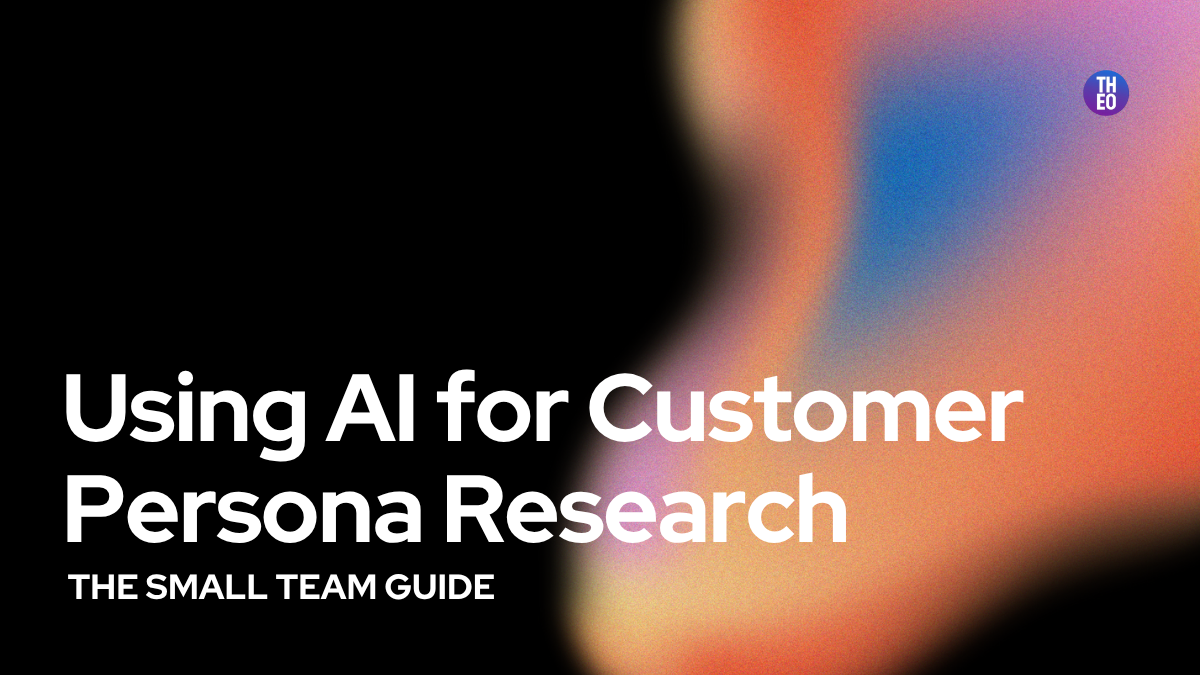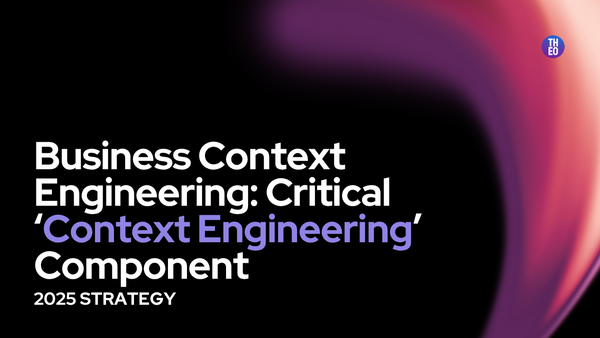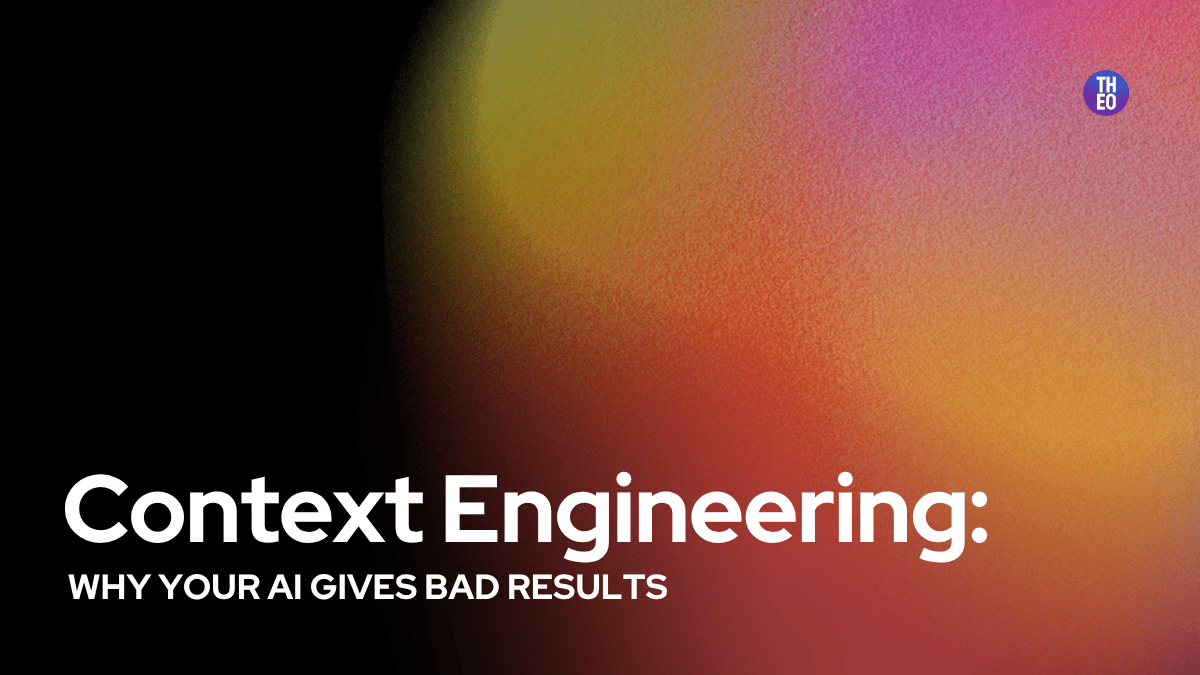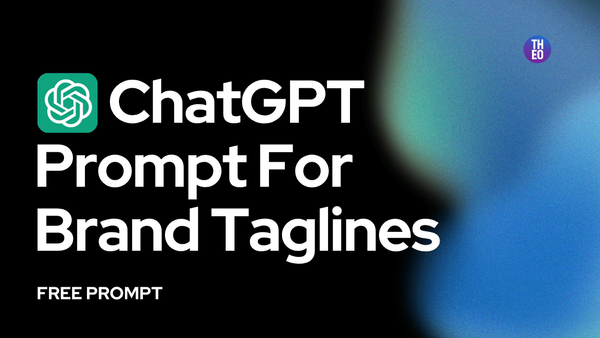Using AI for Customer Persona Research (The Small Team Guide)
Transform customer conversations into AI-powered personas in 70 minutes. No expensive tools. Framework that improves email opens 40-60% and lead quality 3-5x for small teams.

How to transform scattered customer data into powerful personas that actually drive marketing decisions—without expensive research tools or months of analysis.
Why Most Customer Personas Fail Small Teams
Here's the uncomfortable truth: 73% of marketing teams admit their customer personas gather dust after creation. Why? Because traditional persona research requires resources most small teams don't have—dedicated researchers, expensive survey tools, and months of data collection.
But here's what's changed: AI can now analyze your existing customer touchpoints, extract patterns from your sales conversations, and identify behavioral trends from your support tickets. The result? Customer personas that reflect real customer behavior, not just demographic guesswork.
The Small Team Advantage: You Already Have the Data
While large companies struggle with data silos and department barriers, small teams have a unique advantage—you're closer to your customers. Your sales team talks to prospects daily. Your support team handles real customer problems. Your founders probably still take customer calls.
The challenge isn't getting access to customer insights. It's organizing and analyzing what you already know systematically.
Professional marketing teams don't rely on generic survey templates or basic demographic data. They use systematic frameworks that combine multiple data sources with AI analysis to create personas that actually influence marketing decisions.
Here's the step-by-step framework used by marketing teams that see measurable results from their persona work:
Phase 1: Data Inventory and Context Preparation (15 minutes)
Before jumping into AI analysis, gather your existing customer touchpoints:
Sales Conversation Transcripts
- Recent discovery calls and demos
- Lost deal analysis notes
- Common objections and responses
- Buying process feedback
Customer Success Data
- Onboarding feedback
- Support ticket themes
- Customer churn analysis
- Success story details
Marketing Performance Data
- High-performing content topics
- Email engagement patterns
- Social media interaction themes
- Website behavior analytics
Pro Tip: Don't aim for perfection. Even 3-5 examples from each category will provide enough material for AI analysis that's significantly more accurate than generic surveys.
Phase 2: AI-Powered Pattern Analysis (20 minutes)
Now comes the systematic approach that separates professional teams from those still using demographic guesswork.
Step 1: Upload Your Context to AI Instead of asking AI generic questions about customer personas, provide your business context first:
- Your product/service details
- Your current customer base characteristics
- Your competitive positioning
- Your growth stage and challenges
Step 2: Systematic Data Analysis Use this framework for AI-powered analysis:
1. Buying motivation patterns: What consistently drives purchase decisions?
2. Decision-making processes: How do different types of customers evaluate solutions?
3. Pain point hierarchies: Which problems cause the most urgency?
4. Communication preferences: How do different segments prefer to receive information?
5. Success metrics: What outcomes do customers care about most?
Customer interaction data: [Insert your sales calls, support tickets, feedback]
Step 3: Behavioral Segmentation Rather than creating personas based on job titles or company size, focus on behavioral patterns:
- Problem-Solving Approach: How do they research solutions?
- Decision Timeline: What's their typical buying process length?
- Risk Tolerance: Do they prefer proven solutions or innovative approaches?
- Resource Constraints: What limitations influence their decisions?
Phase 3: Persona Framework Development (25 minutes)
Professional teams use structured frameworks that connect persona insights directly to marketing tactics. Here's the template that actually gets used:
Persona Core Profile
- Behavioral Archetype: [Primary behavior pattern]
- Primary Motivation: [What drives their decisions]
- Biggest Frustration: [What causes them stress]
- Success Metric: [How they measure results]
Marketing-Specific Insights
- Content Preferences: [Format, tone, depth level]
- Channel Preferences: [Where they consume information]
- Messaging Triggers: [Words/phrases that resonate]
- Objection Patterns: [Common concerns and resistance points]
Tactical Applications
- Email Subject Lines: [Specific examples that work]
- Social Media Approaches: [Platform-specific strategies]
- Content Topics: [Specific themes that engage]
- Sales Conversation Starters: [Opening questions that work]
Phase 4: Validation and Refinement (10 minutes)
Before finalizing personas, run them through this professional validation process:
Internal Team Review
- Sales team: "Do these match the prospects you talk to?"
- Customer success: "Do these reflect our actual customers?"
- Leadership: "Do these align with our growth strategy?"
AI-Powered Gap Analysis Ask your AI assistant:
Quick Market Reality Check Use AI to compare your personas against industry benchmarks:
Advanced Technique: Dynamic Persona Updates
Here's where professional teams pull ahead: they don't create personas once and forget them. They build systems for ongoing persona intelligence.
Monthly Persona Reviews
- New customer feedback analysis
- Sales conversation pattern changes
- Market condition impact assessment
- Competitive response adjustments
Seasonal Persona Variations
- Budget cycle considerations
- Industry-specific timing factors
- Economic condition impacts
- Competitive landscape shifts
Implementation Checklist
Week 1: Foundation Setup
- Gather existing customer interaction data
- Set up business context for AI analysis
- Complete initial persona framework development
Week 2: Team Integration
- Review personas with sales and customer success teams
- Create tactical application guides
- Test personas with current marketing campaigns
Week 3: Optimization
- Measure persona-driven campaign performance
- Refine based on team feedback
- Establish monthly review process
What Success Looks Like
Teams that implement systematic AI-powered persona research typically see:
- 40-60% improvement in email open rates with persona-specific subject lines
- 25-35% increase in content engagement when topics align with persona motivations
- 50-70% reduction in sales qualification time when targeting matches persona patterns
- 3-5x better lead quality from marketing campaigns designed around behavioral personas
Beyond Basic Demographics
The most successful small teams focus on behavioral personas rather than demographic profiles. Instead of "Marketing Manager, 30-40 years old, SaaS company," they create personas like:
"The Strategic Optimizer"
- Researches extensively before buying
- Values proven ROI over cutting-edge features
- Prefers detailed case studies and implementation guides
- Makes decisions based on measurable business impact
This behavioral approach makes every marketing decision clearer and more effective.
The difference between marketing teams that struggle with generic messaging and those that consistently hit their targets often comes down to one thing: systematic customer persona research that actually reflects their real customers, not industry stereotypes.
Professional marketing teams don't rely on guesswork. They use systematic AI-powered research to understand their customers deeply—and you can too, even with a small team and limited resources.
💡 Wait, what if this process was just the tip of the iceberg? What if you could skip all manual work and get an AI that automatically captures your complete business DNA & ICP, then creates system instructions so sophisticated your assistant becomes 10x more strategically intelligent - with just a 2-minute setup?
See how → or get weekly AI marketing tips that actually work for small businesses.





